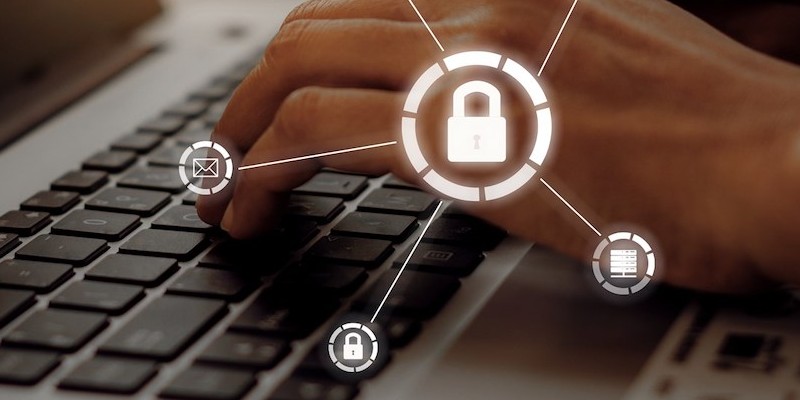
When Working From Home Isn’t a Choice: Simple Ways to Stay Focused and Productive
By Leslie Hobbs
As the business disruption brought on by Coronavirus continues to evolve, some tens of thousands of workers across the world are embarking on an unexpected new normal: working from home. In the days to come, that number will surely rise to the millions.
Unlike the typical work from home scenario, it’s not a choice for many, at least for now. Given these circumstances – and how fluid and fast-paced the pandemic developments feel – it can be a difficult adjustment for some.
Although it can be challenging to focus at a time like this, work serves as a welcome distraction. Here are some simple ways to stay productive and feel (more) normal in a situation that’s unprecedented.
Make a plan for your day – and stick to it.
Thinking ahead keeps you focused on the elements you can control. So at the end of each workday, create a plan or to-do list for the following day. Not only will your new workstyle be more structured but also, as a bonus, you’ll have a visual reminder of your everyday accomplishments as you review what you’ve checked off.
And during this period, don’t let little housekeeping items (e.g., cleaning out your inbox) fall by the wayside. If you have a weekly staff meeting, or a regular one on one, migrate this immediately to a conference or video call. Set a calendar reminder to get regular tasks – like a weekly status update – completed. There’s a reason that routines are easy to develop: they’re comforting. Stick to yours.
Gather contact information.
Do a quick audit of the colleagues—and key customers—you’ll need to communicate with over the next couple of weeks. Is all their contact information – for example, mobile or home phone – in your contact list? Make sure you save it and print it out, just in case. And use this opportunity to send your updated information to people who may need to reach out to you.
Prioritize chat over email.
Tools like Microsoft Teams, G Suite and Slack are better than email, especially now, argues Nick Meehan, user experience expert at Xerox PARC. “Email is inherently slow,” says Meehan. “It can delay communication by hours, even days.” In contrast, a Slack-like option moves companies closer to the speed and ease of texting – with the added bonus of themed channels and the ability to send documents back and forth.
Meehan does suggest drawing some boundaries. “These tools are so easy to use that you can start to feel like you have to be available all the time,” he cautions. “Companies should set up protocols so you don’t have to respond after a specific time – but you can also pause notifications after a set hour of the day in your settings.”
Choose video – not conference calls.
When you’re used to going into an office, not seeing your usual cadre of colleagues might be jarring. Even if you regularly work from home, it might just feel better to see your teammates face to face. Prioritize video calls over a conference call option if you can. Now more than ever, it’s important to have that visual connection with other human beings.
Make sure you establish good video call etiquette, says Meehan. For example, if part of your team is still working onsite together, make sure they each open their own video window – even if they’re in the same room with each other.
“It puts the remote participants on the same level as those in the room,” observes Meehan. “It helps cut down the tendency in-person people have to talk over their remote colleagues.”
Don’t let IT glitches hang you up.
It’s possible that email, WiFi and bandwidth may be slower, more unreliable, or even stop altogether from time to time. Take that moment to triage. What issues are the most urgent? Pick up the phone for those. Take good notes so that when tech is fully functional, you can share a quick recap and ensure everyone is still on the same page. For other tasks, you may be able to draft emails in batches, monitor the system, and then send them quickly once things are back up. You could also coordinate by text, Slack, internal messaging clients (if functional), etc.
Work around concentration issues.
It can feel difficult to focus right now. Do the best you can to find workarounds or distractions to your distractions. If a project feels overwhelming, break it into parts and do the easiest ones first. Or set it aside altogether if needed in favor of those housekeeping items mentioned above.
A scenery change can help – transition to a different area of your home, if possible, at least some of the time. Take a quick walk. Turn on some music for a bit. Streaming services like Spotify are great for mood-boosting playlists.
Set limits on unhealthy screen time.
With news of travel limitations, testing, and containment zones, it’s hard to avoid being a news junkie. But “all coronavirus, all the time” will not help your mental health. Limit yourself to a set number of times in a day to check the news. When you’re chatting with colleagues, it’s fine to discuss it for a few minutes but don’t let it spiral. Set the tone by moving on to your typical work topics quickly.
Break up your day in a healthy way.
Breaks are critical for reinvigoration. Even on the best day, staring at a screen for too long will sap concentration and slow productivity. Step away and enjoy a distraction-free lunch. Inject some physical effort into your day: stand up and stretch, do some squats, try out a plank. If schools have closed, enjoy your children for a few minutes. Call a favorite colleague or a friend to connect and see how they’re doing.
Then, of course, get back to it.
Remember, simply by working from home, you are contributing to one of the most powerful and effective ways to address the pandemic: social distancing to “flatten the curve” and slow the spread of the virus.
If you’re new to working from home, what’s working for you? Work from home veterans, what else do you recommend?

Xerox’s Ongoing Response to COVID-19
We want to share some of the actions we have taken to keep the entire Xerox community safe while minimising impact to our operations and yours amid this public emergency.
Related Articles

French Non-Profit Association Case Study
See how Xerox helped boost productivity and accessibility for one of France's most significant non-profit organizations with the help of our Managed Print Services and Workflow Central Platform.

3 Essentials to Cybersecurity
Discover how Xerox technologies can help to secure your printer and data.

Cybersecurity Essentials
Learn how to protect your business from cybercrime. See how Xerox's guide can help improve your security with essential steps like testing passwords, examining firewalls, and analyzing employee behavior.

Cybersecurity Readiness Guide for Small and Medium Businesses
Discover how to stop hackers in their tracks. Protect your business from rising threats with Xerox's comprehensive guide. Learn essential steps to safeguard your organization, secure employee credentials, and prioritize critical data.

Healthcare Solutions for Xerox Workplace Cloud
Xerox® Workplace Solutions ensures secure MFP access and pull printing for healthcare, protecting patient data and ensuring compliance. Print securely from any device with single sign-on and event logging.

Training provider innovates the delivery of learning, making content more accessible.
CRC Formation training staff use Xerox® Workflow Central to offer students new ways to learn.





